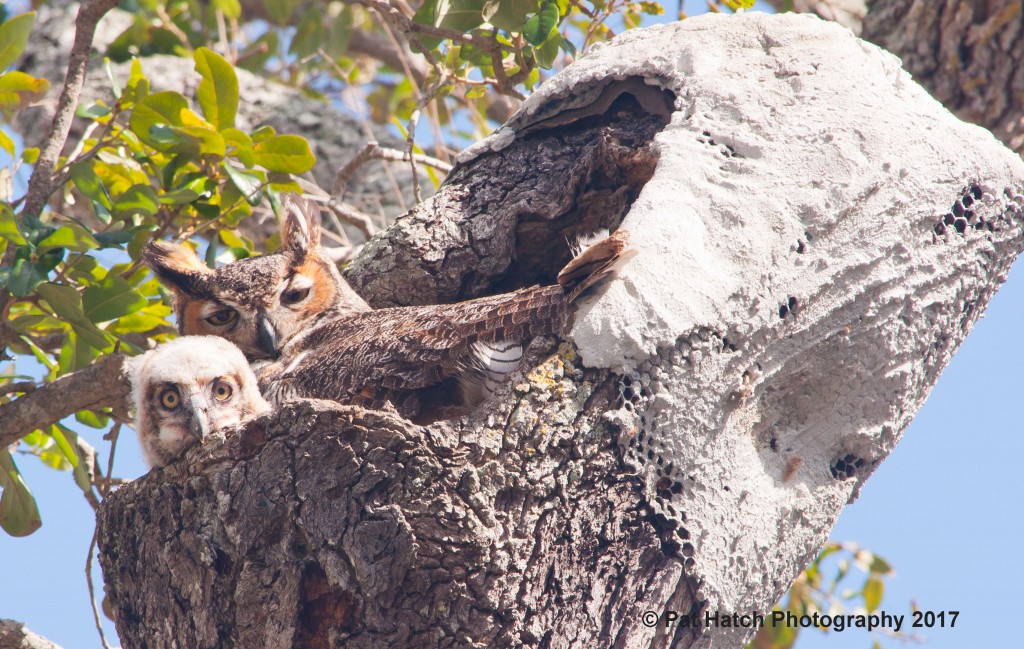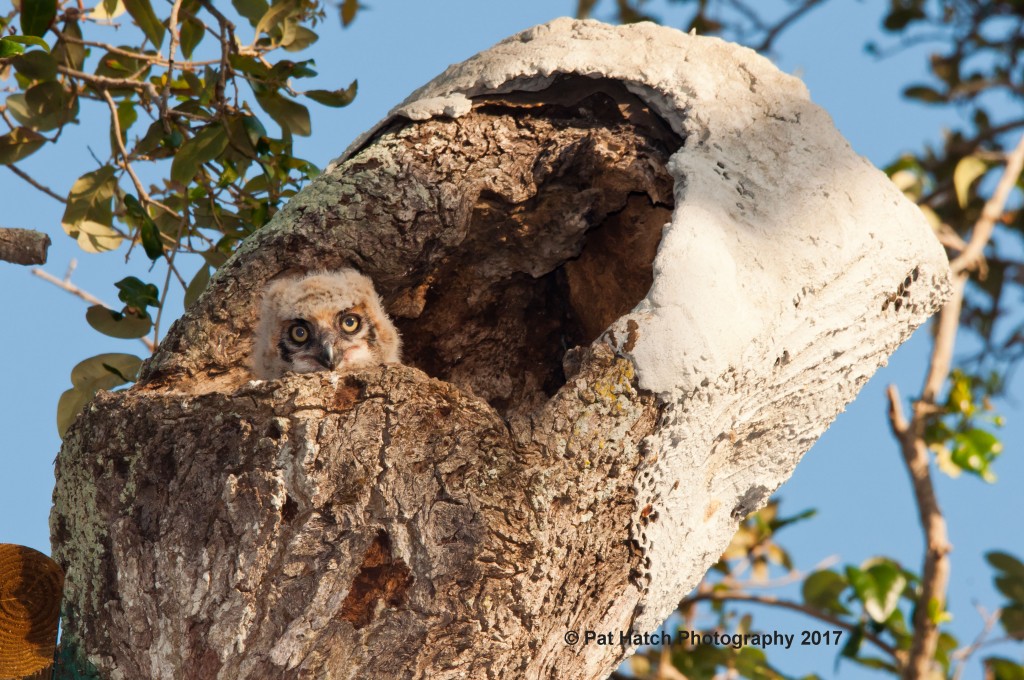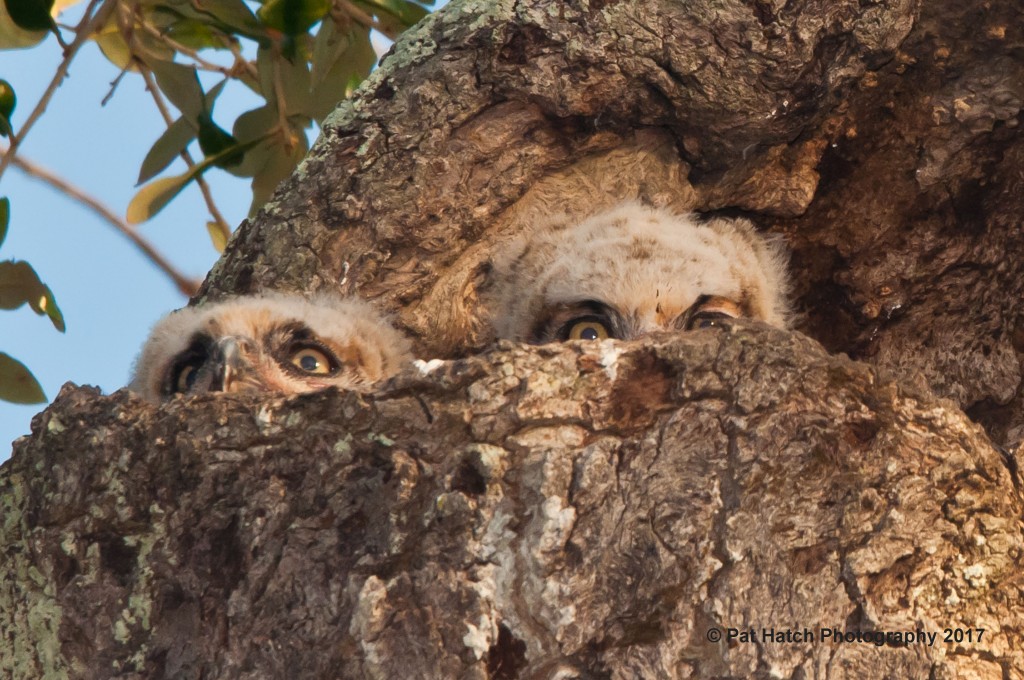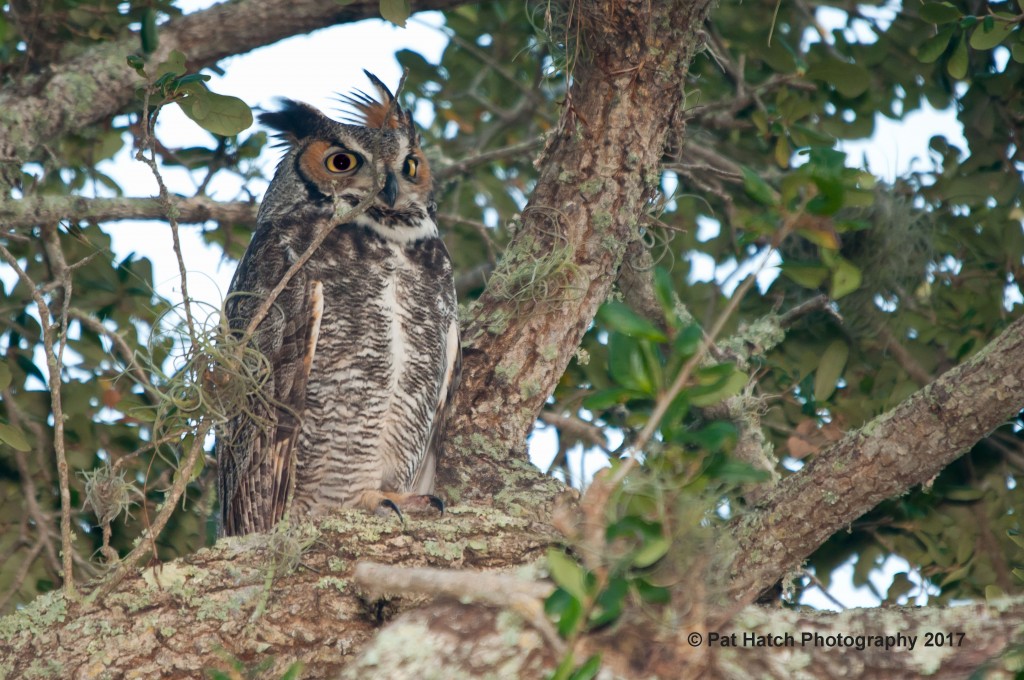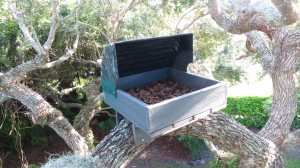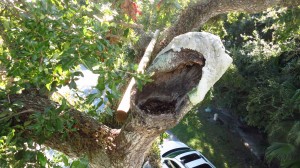2017 Owl Season is Here
Today was actually the first day that I was able to photograph the chicks this season. Mom is beginning to leave the nest for extended periods now leaving the two owlets by themselves to peek over the edge of the hollow. I went out around noon and saw mom and one of the owlets (picture below). I came back a couple of hours later and mom had departed. However, dad was nearby keeping watch over the little ones.
This year's first owlet hatched on January 3rd followed by owlet #2 a couple of days later. I believe this is the third breeding season for this particular female. The first two years' brood was just a single owlet so this was her first year with two. The owls returned to their same hollow nest in the oak tree in our neighborhood. Last year the single owlet fell from this nest. We were fortunate that we were able to get a bucket truck from our tree service to drop by and help us put the little guy back up in the nest. I think one of the reasons he fell was due to the lack of access to the other branches in the tree. When the owlets begin to "branch", they hop along the adjacent limbs--half flying, half hopping. This is how they learn to fly. Since the large branch broke off a few years ago just above the nest hollow, we lost the ability for the owlets to branch out to nearby limbs. Instead the owlets were climbing on top of the concrete cap that we built in order to shore up the hollow. When the branch broke off at the hollow, we lost the branch network leaving the owlets isolated in their hollow. So last summer we came up with the idea to bolt an 8-foot fence post to the side of the hollow and lay it over the fork on an adjacent branch thus giving the owlets a new pathway to other branches.
Here's dad. He was in an adjacent oak tree nearby while mom was taking a break:
And here are a couple of photos of the work we did this past summer. The new owl platform is located in a hammock of old oak trees not too far from the current location of the nest. The idea is that the current nest hollow is in a state of deterioration so the new platform is our backup plan for when the hollow is no longer usable. According to the folks at the Avian Reconditioning Center in Apopka, FL, the owls will eventually find their new nest--it might just take a few years. We built it to last. It is made of Trex and carbon fiber with stainless steel hardware. And finally, we'll soon find out, but we're hoping the new fence post addition to the side of the hollow will provide a path for the branchers when they start the fledging process.
